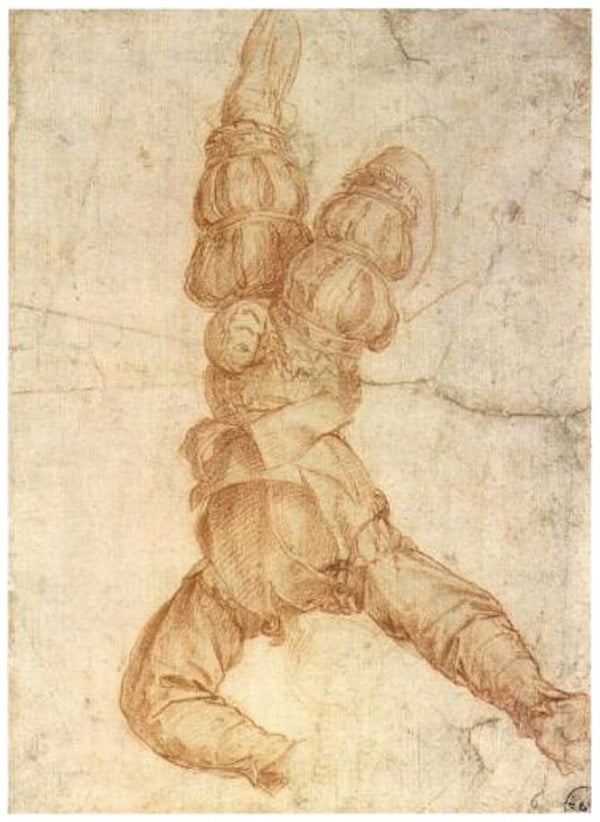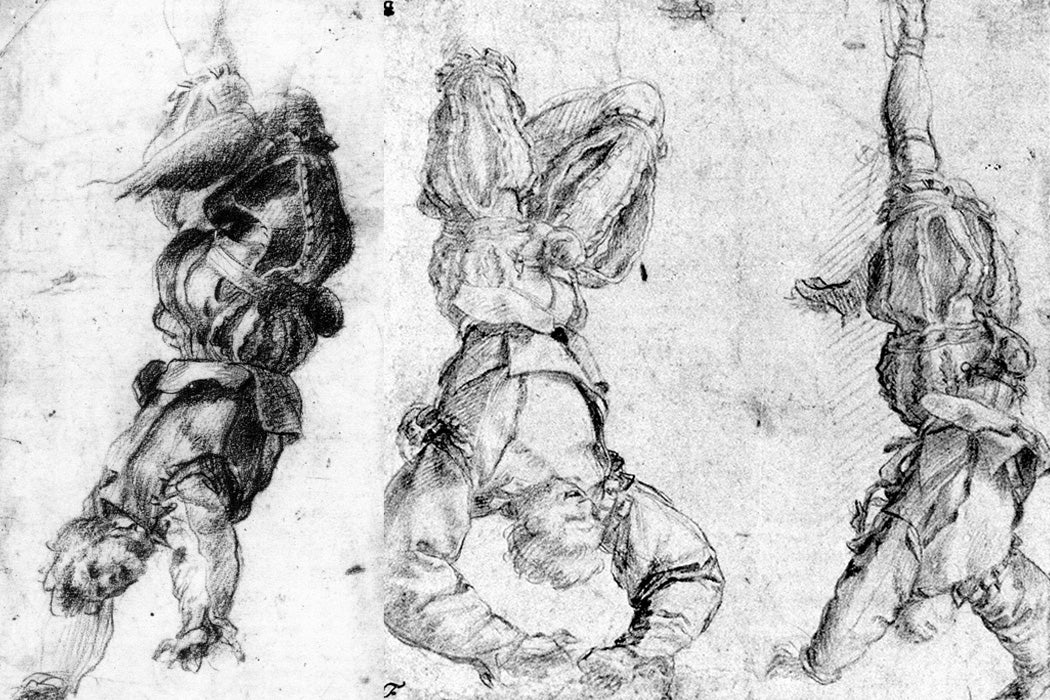In Renaissance Italy, having your portrait painted could be a form of punishment: it was never good to be the subject of a pittura infamante, a painting designed to humiliate.
A portrait gallery of local malefactors, labeled with names and crimes, covered the walls of Florence’s Bargello, a building that first housed the podestà, the city’s chief magistrate, and later its prisoners. The condemned were often hung from the windows of the same building, creating a grim continuity between painted punishments and real executions.
As art historian Samuel Edgerton writes in “Icons of Justice,” these portraits were periodically frescoed on the Bargello exterior. But far from presenting a drab, morose scene, they offered lively figures and bright colors. In this manner, the Bargello
may even have been regarded as a “negative church.” With its gaudy portraits of mortal sinners [it] must have presented itself to the Florentine citizenry as a sort of temple of vices, just as the ordinary churches with their decorations and portraits showing saints and heroes…were regarded as temples of the virtues.
What did you have to do to get your portrait added to the temple of vices? For the most part, these portraits were made when the suspected criminals had managed to flee the city; they functioned as a kind of punishment in effigy. But the crime could be as prosaic as a defaulted loan or as dramatic as a coup attempt.
The portraits typically depicted men of the local elite. Humiliation was the perfect punishment for an upper class that valued fama, or reputation, above almost anything else. Infama—bad reputation—wasn’t just a matter of gossip; it was a legal status that could stand in the way of business deals and marriages. Being designated as infamous could even have drastic physical consequences: an infamous person’s oath was valueless, so if they ended up in court, they were liable to be tortured.

Few examples of the genre survive, since the ever-shifting winds of politics in the Renaissance meant that a pittura infamante daubed up one day might be whitewashed over the next. But enough documentation survives to give us an idea of what these portraits were like. The classic example of the genre shows the subject dangling upside down from his ankle, much like the Hanged Man motif in Tarot. But since the brief was simply to humiliate, the artists could get creative. They might surround the figure with a crowd of little devils or throw in a barnyard animal pooping on their family crest.
As fun as that might sound, it doesn’t seem like artists were eager to take on these commissions. Some accounts even suggest they sometimes had to be forced. Perhaps they were worried about reprisals if the high-profile people they painted ever came back to power. Or perhaps they noticed that the subject matter had a tendency to rub off on you: one pittura infamante artist, Andrea del Castagna, never escaped his gruesome nickname>—“Andreino of the Hanged Men.”
Weekly Newsletter
Still, even Botticelli painted a pittura infamante, and Leonardo da Vinci produced what appears to be a preparatory sketch for one. In other words, the same artists that might on one day devote themselves to gilding a saint’s halo, or imbuing wisdom into the wrinkles on a magistrate’s face, could find themselves the next day incising lines of treachery and deceit on a familiar, now disgraced, face. After all, it was important that these portraits be good. Recognizability was at a premium since the portraits served as the public punishment for people who’d evaded the long arm of the law.
But even beyond that, pitture infamanti had to send a message. They took their place in cities where military heroes stared down from wall frescoes and little shrines stood at street corners—so many that, as art historian Fabrizio Nevola argues, you could imagine them as a kind of network of holy supervision, reminding people that their every act was being watched by the Divine. While the wheel of fortune spun, turning one noble into a duke, another into an outlaw, these images remained, presenting an unchanging parable of simple good and evil.







